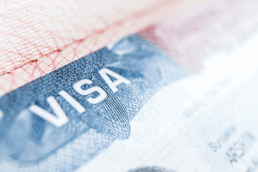Anyone waiting to receive an employment-based or family-based green card is likely already familiar with the visa bulletin. The visa bulletin is published by the U.S. Department of State each month and serves as a waiting list for foreign nationals whose immigrant visas are subject to a yearly quota. Because the number of green card applicants generally exceeds the available immigrant visas, foreign nationals are given “priority dates” when an initial immigrant petition or labor certification is filed. The priority date represents the foreign national’s place in line for a green card. Once the priority date becomes “current” the foreign national may apply for their physical green card.
To make it easier for foreign nationals to track their place in line, U.S. Citizenship and Immigration Services (USCIS) posts a condensed version of the visa bulletin on its website and specifies which chart certain foreign nationals should use to determine when their priority date becomes current. The visa bulletin is made up of four charts:
- Final action dates for family-sponsored preference cases;
- Dates for filing family-sponsored visa applications;
- Final action dates for employment-based preference cases; and
- Dates for filing of employment-based visa applications.
Notably, the employment-based and family-based charts are separated by “final action dates” and “dates for filing.”
What Is the Difference Between “Final Action Dates” & “Dates for Filing”?
The “Final Action Dates” indicate the dates an immigrant visa number will be available for a foreign national with a current priority date that month. This is an important date because once the immigrant visa number is available, the foreign national’s physical green card can be issued. A green card cannot be issued unless the applicant’s priority date is earlier that the Final Action Date listed on the visa bulletin.
If USCIS determines there are more immigrant visas available for a fiscal year than there are known applicants for such visas, it will allow foreign nationals to use the “Dates for Filing” chart. The Dates for Filing are the earliest dates green card applicants may apply for a green card. These are the dates the National Visa Center (NVC) uses to notify green card applicants that they can start getting documentarily qualified. These dates are typically eight to 12 months prior to the expected Final Action Dates and allow applicants to submit their application for permanent residence and relevant documents before it is time for the government to approve it. This is beneficial because it can allow foreign nationals who are stuck in the backlog to apply for and obtain work authorization much sooner than if they had to wait for the priority date to be current under the relevant Final Action Date.
Additional Assistance
If you have any questions about navigating the visa bulletin or are looking to become a lawful permanent resident in the U.S., please contact our office to schedule a consultation with one of our attorneys today!
Ready to have Berardi on your side?
Whether you’re a business looking to hire or a professional hoping to relocate, immigration law can be complicated. But you don’t have to do it alone. Put our experience to work for you.



